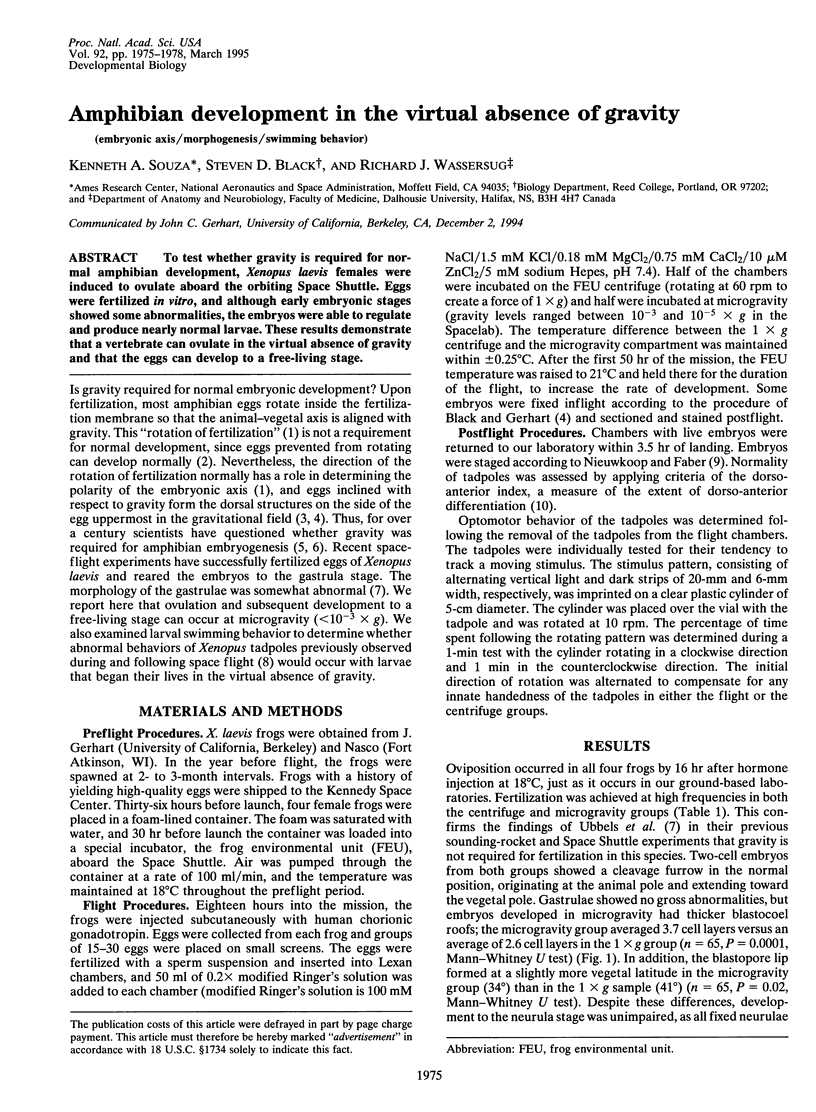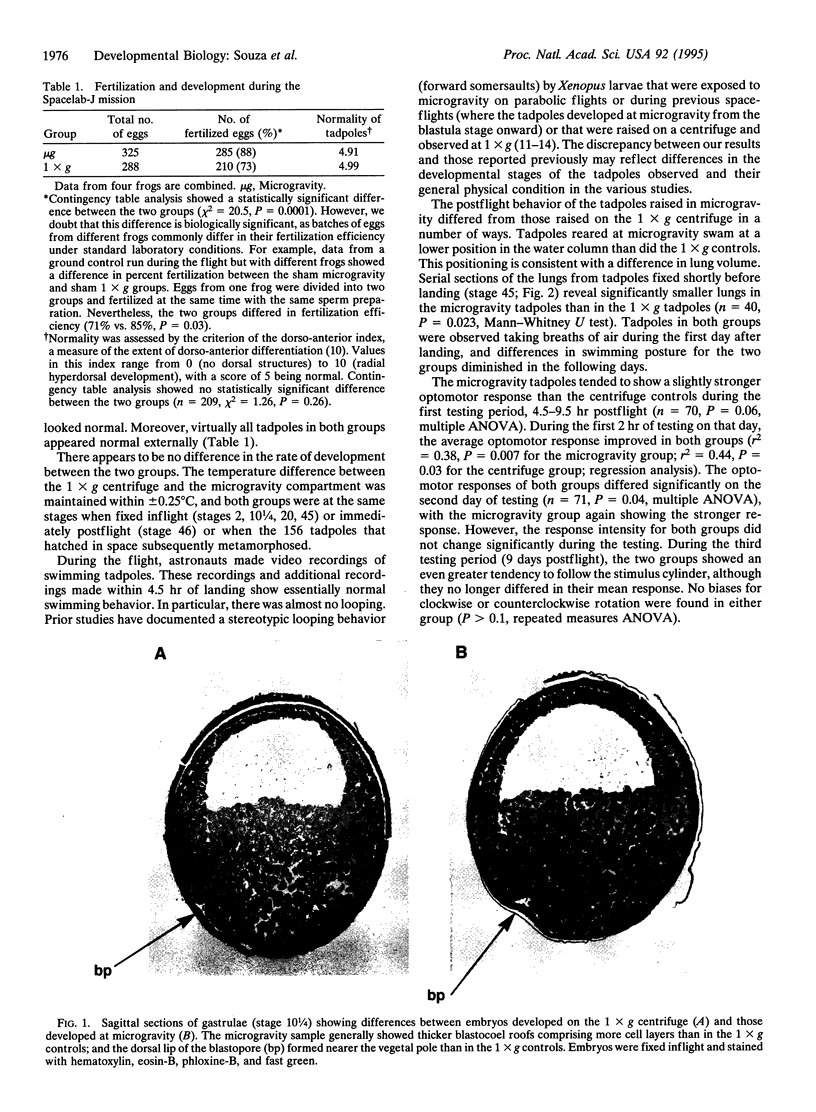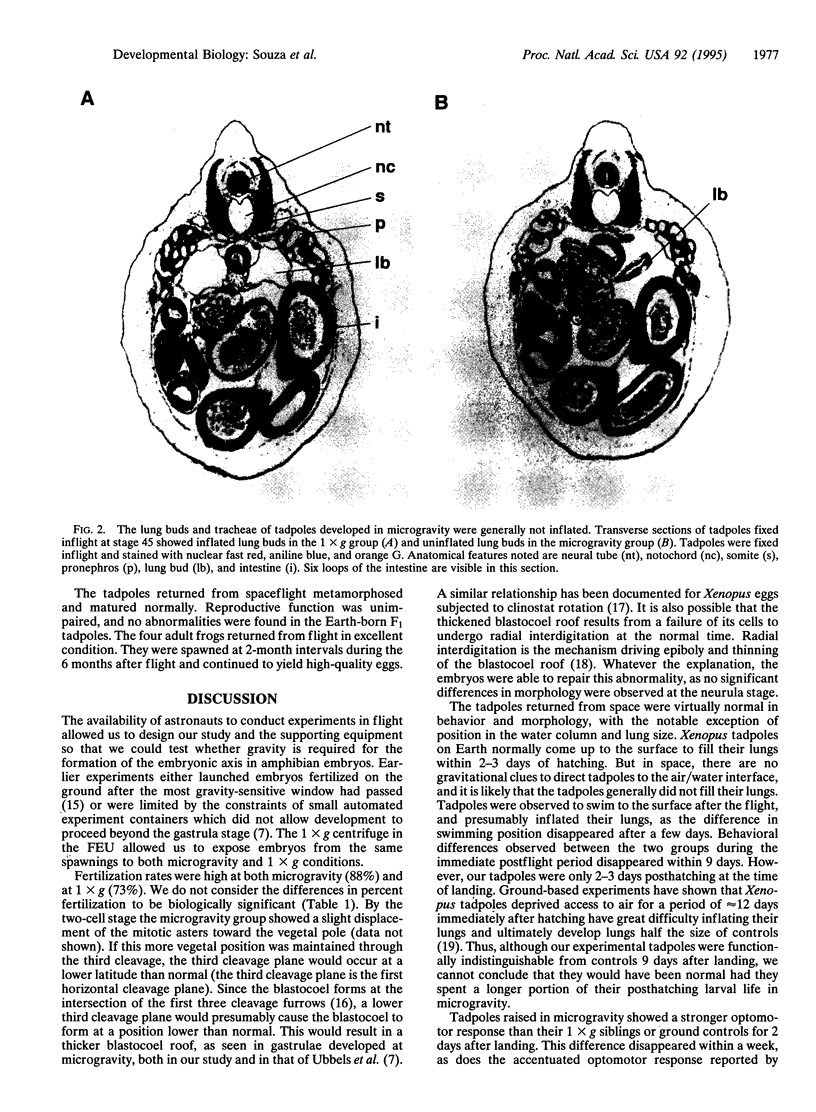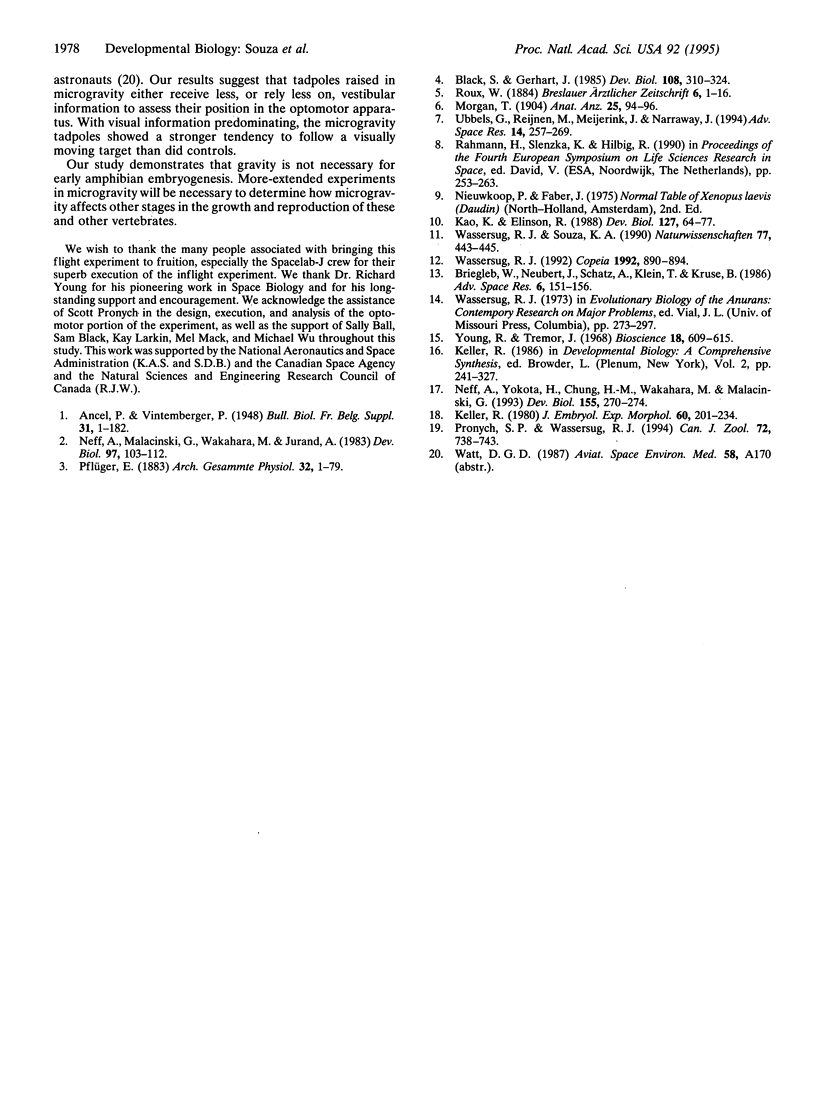Abstract
To test whether gravity is required for normal amphibian development, Xenopus laevis females were induced to ovulate aboard the orbiting Space Shuttle. Eggs were fertilized in vitro, and although early embryonic stages showed some abnormalities, the embryos were able to regulate and produce nearly normal larvae. These results demonstrate that a vertebrate can ovulate in the virtual absence of gravity and that the eggs can develop to a free-living stage.
Full text
PDF



Images in this article
Selected References
These references are in PubMed. This may not be the complete list of references from this article.
- Black S. D., Gerhart J. C. Experimental control of the site of embryonic axis formation in Xenopus laevis eggs centrifuged before first cleavage. Dev Biol. 1985 Apr;108(2):310–324. doi: 10.1016/0012-1606(85)90035-1. [DOI] [PubMed] [Google Scholar]
- Briegleb W., Neubert J., Schatz A., Klein T., Kruse B. Survey of the vestibulum, and behavior of Xenopus laevis larvae developed during a 7-days space flight. Adv Space Res. 1986;6(12):151–156. doi: 10.1016/0273-1177(86)90079-7. [DOI] [PubMed] [Google Scholar]
- Kao K. R., Elinson R. P. The entire mesodermal mantle behaves as Spemann's organizer in dorsoanterior enhanced Xenopus laevis embryos. Dev Biol. 1988 May;127(1):64–77. doi: 10.1016/0012-1606(88)90189-3. [DOI] [PubMed] [Google Scholar]
- Keller R. E. The cellular basis of epiboly: an SEM study of deep-cell rearrangement during gastrulation in Xenopus laevis. J Embryol Exp Morphol. 1980 Dec;60:201–234. [PubMed] [Google Scholar]
- Neff A. W., Malacinski G. M., Wakahara M., Jurand A. Pattern formation in amphibian embryos prevented from undergoing the classical "rotation response" to egg activation. Dev Biol. 1983 May;97(1):103–112. doi: 10.1016/0012-1606(83)90068-4. [DOI] [PubMed] [Google Scholar]
- Neff A. W., Yokota H., Chung H. M., Wakahara M., Malacinski G. M. Early amphibian (anuran) morphogenesis is sensitive to novel gravitational fields. Dev Biol. 1993 Jan;155(1):270–274. doi: 10.1006/dbio.1993.1024. [DOI] [PubMed] [Google Scholar]
- Pronych S., Wassersug R. Lung use and development in Xenopus laevis tadpoles. Can J Zool. 1994;72:738–743. doi: 10.1139/z94-099. [DOI] [PubMed] [Google Scholar]
- Ubbels G. A., Reijnen M., Meijerink J., Narraway J. Xenopus laevis embryos can establish their spatial bilateral symmetrical body pattern without gravity. Adv Space Res. 1994;14(8):257–269. doi: 10.1016/0273-1177(94)90410-3. [DOI] [PubMed] [Google Scholar]
- Wassersug R. J., Souza K. A. The bronchial diverticula of Xenopus larvae. Are they essential for hydrostatic assessment? Naturwissenschaften. 1990 Sep;77(9):443–445. doi: 10.1007/BF01135948. [DOI] [PubMed] [Google Scholar]
- Wassersug R. The basic mechanics of ascent and descent by anuran larvae (Xenopus laevis). Copeia. 1992;3:890–894. [PubMed] [Google Scholar]
- Watt D. G. The vestibulo-ocular reflex and its possible roles in space motion sickness. Aviat Space Environ Med. 1987 Sep;58(9 Pt 2):A170–A174. [PubMed] [Google Scholar]




